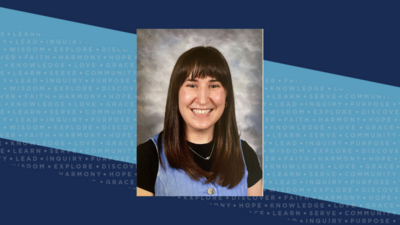How to Approach Writing Papers in College

Most college students will, at some point in their undergraduate career, be required to write papers or essays for a class – sometimes even more than one! Whether you are an English major and writing papers is second nature for you or you’ll be done with authoring papers once you step out of your general education courses, it’s important to know how to use written language to express an opinion, convey facts, or tell a story. Writing papers can be easy – or even enjoyable – if you have an efficient approach.
Writing can usually be sorted into three major stages: planning, drafting and editing. The first of these, planning, can be a step that varies greatly in length depending on the nature of what you’re writing. For example, if your writing project is a twenty-page research paper, planning is going to look quite different from it would for a one-page reflection on a few Bible verses for your New Testament class.
For a research paper or any project that requires gathering information before you start writing, use your resources! Explore online databases or print books on Link Library’s website, ask questions of professors or other helpful human resources, and narrow down your source base using Google or database searches. Once you have collected a well-rounded group of sources, it can be useful to create a bibliography – this step makes it easier to find all your sources in one spot and takes away the stress of having to create one after your paper is complete.
Annotating your bibliography – that is, taking a few notes on the content of each source – can also assist in the next step of planning. Outlining your paper gives you a “skeleton” on which to build your paper’s content and prevents you from wandering from the content that should be featured in the final product. Outlines don’t have to be complex; in fact, they can just consist of a few important points that draw from information in your sources. A simple outline might have five points: an introduction, the main ideas of three body paragraphs, and a conclusion. A more complex one might have several sub-points under each of these main ideas.
The most essential consideration in deciding when to transition from outlining to writing is time. One possible approach is to write your paper’s due date in your planner and back up from there, giving yourself ample time to write and edit. Then, you can start your paper, but not necessarily at the beginning. Sometimes, it is better to begin with the body of the paper and write the introduction as a summary after you know what your content includes.
If you choose to save your introduction for last, the final sentence you write in your first draft is likely to be your thesis statement. Every paper should have a clear, concise thesis statement that sums up the entirety of your writing in no more than 20 to 50 words. This sentence is also known as a “purpose statement” and gives your reader a preview of the rest of your paper. Without a clear purpose, a piece of writing can come across with little direction and an unclear aim.
Although finishing the first draft of a paper can provide a satisfying sense of accomplishment, the work still isn’t done – with a healthy amount of editing, however, your paper will become a clean and cohesive final product that is ready to turn in.
Especially in research papers, plagiarism is something for which students should be on the lookout. Passing off another author’s work as your own, whether intentionally or accidentally, is a serious offense that can leave a lasting mark on a student’s academic career and reputation. Fortunately, plagiarism checkers like Turnitin and Grammarly are convenient options for writers who want an extra pair of eyes on their work.
Another layer of protection against plagiarism and other errors is to have a pair of human eyes look over your draft. Asking a professor, parent or friend to read your paper – or reading it to them yourself – can help you find portions of your work that may be unclear, confusing, or hard to read. In addition, reading your paper aloud to yourself (or your dog, or even an audience of stuffed animals) is a way to make sure that your syntax and grammar flow in a way that makes your paper easy to read.
Between the editing process and turning in your finished product, it’s a beneficial idea to let your paper “rest” for a day or two – hence the reason for giving yourself enough time to write and edit before the due date. Coming back to a paper with a fresh mind after a few days may allow you to catch errors that you didn’t see before.
With a final glance over your paper after a period of much-needed “paper rest,” your final product should be ready to turn in. Congratulations! Hopefully, you have a written product that you can look back on with satisfaction and a sense of accomplishment – and one that will get you a great grade in class!
Interested in studying at Concordia University, Nebraska? Learn more here.


